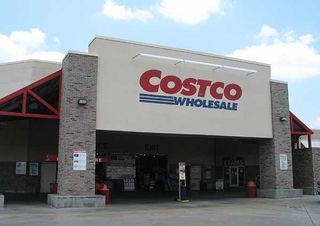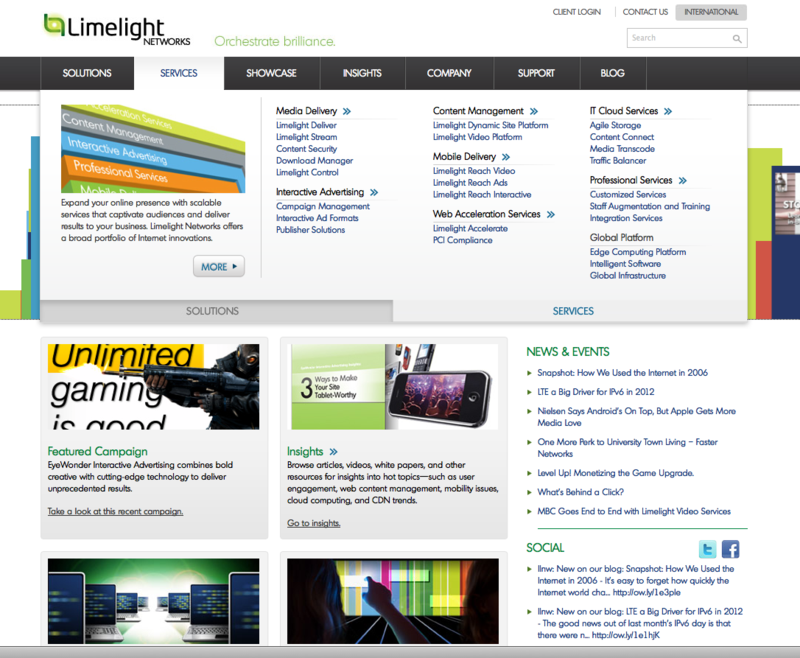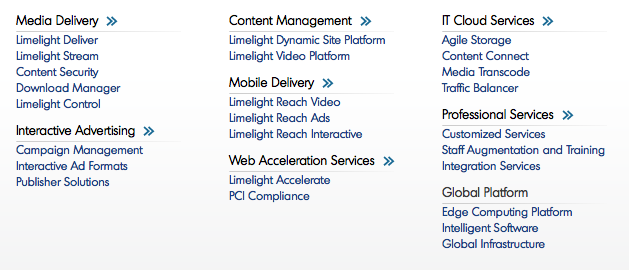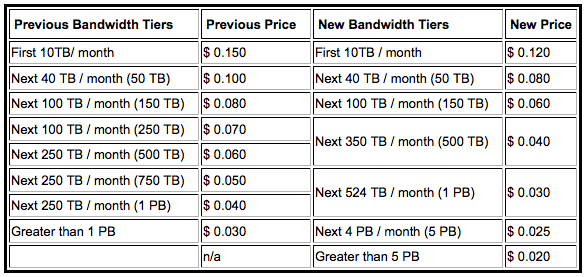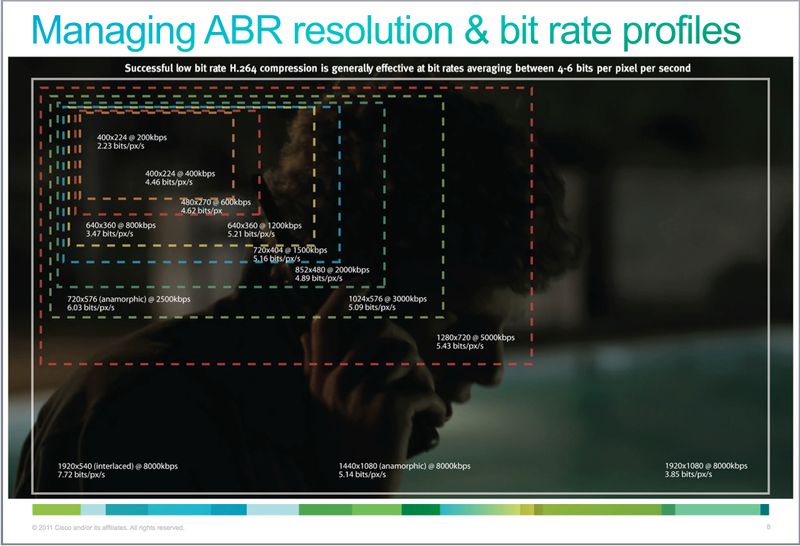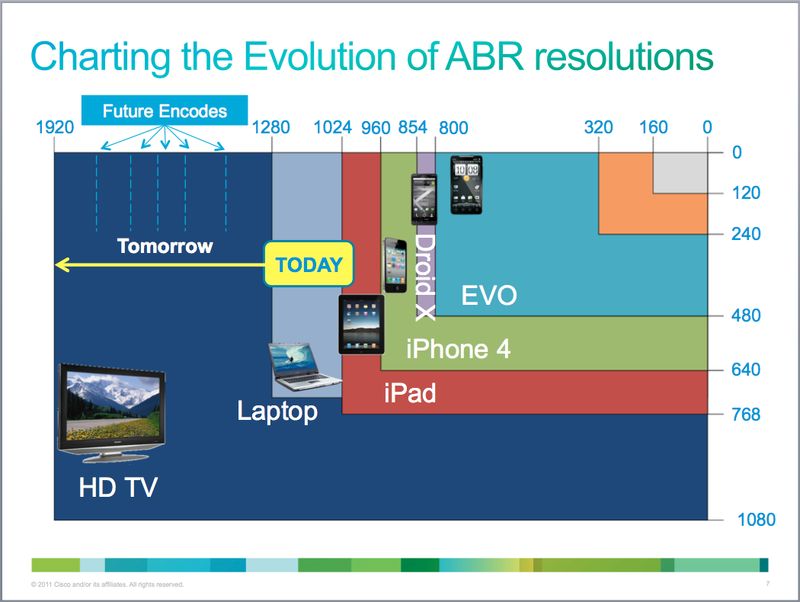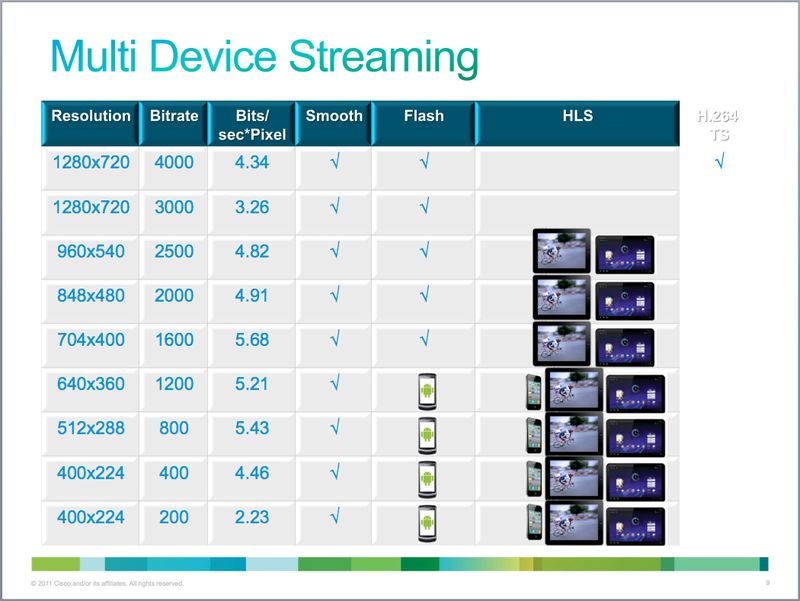It was a busy day on Monday for some of the content delivery companies in the industry. He's a recap:
Limelight Misses Earnings: Limelight reported earnings after the market closed and missed their forecast by $2M. Limelight said they lost $1M in revenue due to one of their customers having a security breach in the quarter and while Limelight didn't want to mention the customer by name, clearly the customer was Sony. With the Sony PlayStation Network (PSN) outage, Limelight lost about $1M in expected revenue towards their CDN business. The other $1M in lost revenue was a lower booking of revenue due to a delay in Limelight rolling out a new version of their EyeWonder platform, which has now been pushed back to Q1 of next year.
Limelight also forecast Q3 revenue below analysts expectations and their stock is getting hammered after hours, trading down to $2.40 a share. Considering how bad the entire market has been over the past week, it was the worst possible timing for Limelight to miss guidance. That said, if Sony didn't have the network outage, Limelight would have met their revenue projections for their CDN business, which is 60% of their revenue, so the revenue miss is not a sign that the CDN market in general is having problems or slowing down.
But, at no time on the call did Limelight reinforce the comments they made earlier in the year when they said their CDN business could grow 12% in 2011. It's still possible, but being we're already six weeks in the the third quarter I think Limelight would have mentioned if they were already starting to see an uptick in traffic, which they didn't. It now appears that 12% growth for their CDN business for the year might be high, with a more realistic expectation being about 10% growth in CDN.
While I don't normally blog about vendors earnings, I'm already hearing that Limelight is in discussions to be acquired and now, with Limelight missing earnings and their stock being close to their at an all-time low, this is the ideal time for someone like Verizon or AT&T to come in and acquire the company. I think we'll hear more about what the company is up to sometime this month.
Akamai Has An Outage: Late in the day on Monday, Akamai experienced a DNS related outage on their network forcing many of their customers websites, including apple.com and others, to be unavailable for about 30 minutes. While outages like this are never good, the positive thing to note is that I can't remember the last time Akamai's network had an outage of this magnitude.
The company emailed me more details on the outage late last night saying that the cause of the outage was as a reuslt of, "a configuration change to take some DNS servers out of service started to propagate to the production network. This otherwise routine change caused some DNS servers to restart repeatedly. The change was introduced at 19:12GMT, and at approximately 19:18 GMT, alerts promptly fired in the Akamai NOCC. A response team identified the issue and reverted the configuration change. The configuration change was reversed at approximately 19:42 GMT. The DNS issue lasted approximately 30 minutes from first impact to return to expected service. We do not anticipate that it will cause further issue."
Amazon Has An Outage: Late on Monday night, a portion of Amazon's EC2 service went down affecting quite a large number of customers, including Netflix. Amazon acknowledged that they were, "investigating connectivity issues for EC2 in the US-EAST-1 region" when the outage was reported and the company resolved the issue about 45 minutes later.
One thing the Akamai and Amazon outages should prove to everyone is that even though all the CDNs always talk about the redundancy built into their networks, ALL networks have outages at one time or another. There has never been a network that hasn't had a major outage and there is no such thing as 100% up-time, no matter what any CDN claims or guarantees in an SLA.
XO Settles With Level 3: When Level 3 announced their intentions to acquire Global Crossing, XO Communications raised concerns with the FCC and made it well known that they were against the pending merger. Apparently that's all behind them now as on Monday, both Level 3 and XO Communications filed a joint document with the FCC saying that the two companies have "reached an agreement that addresses all of XO’s concerns raised in its comments to the Commission about Level 3′s acquisition of Global Crossing."
I'm working on a post with more details on what the Global Crossing acquisition could mean to Level 3 as well as an update on their CDN business from my recent chat with Level 3's CEO Jim Crowe.
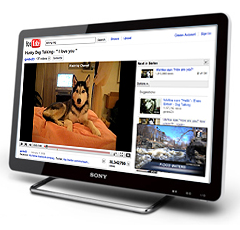 Back in November, Sony lowered the price of their Sony Internet TVs by $200 and in the past few weeks, Sony has lowered the price on them again. If you are looking to upgrade your TV or get one for kids going back to school, these Sony models are one of the best deals I have ever seen on a Internet connected TV, with full support for 1080p. The 24" model is now just $295, down from the $599 price when it originally launched. New pricing on the 32" model is $498, the 40" model is $723 and the 46" model is $961, which is $400 cheaper than last year. (Note: these are the current prices from Amazon – with free shipping.)
Back in November, Sony lowered the price of their Sony Internet TVs by $200 and in the past few weeks, Sony has lowered the price on them again. If you are looking to upgrade your TV or get one for kids going back to school, these Sony models are one of the best deals I have ever seen on a Internet connected TV, with full support for 1080p. The 24" model is now just $295, down from the $599 price when it originally launched. New pricing on the 32" model is $498, the 40" model is $723 and the 46" model is $961, which is $400 cheaper than last year. (Note: these are the current prices from Amazon – with free shipping.)

